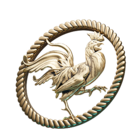Vive La France Collection
| Revision as of 14:56, 1 February 2018 | Revision as of 11:58, 22 February 2018 | |||
5 intermediate revisions by 2 users not shown | ||||
| Line 1: | Line 1: | |||
| ? | + | __NOTOC____NOEDITSECTION__ | ||
| [[File:PCZA008_Vivalafrance.png|140px|left]]The "Vive La France" [[Ship:Collections|collection]] is available during the celebrations surrounding the introduction of the French battleship line beginning on 7 February 2018. | [[File:PCZA008_Vivalafrance.png|140px|left]]The "Vive La France" [[Ship:Collections|collection]] is available during the celebrations surrounding the introduction of the French battleship line beginning on 7 February 2018. | |||
| ? | The | + | The French Navy traces its origins to the early 17th century. It was established through the efforts of the eminent Cardinal Richelieu and includes many glorious and dramatic events. For several centuries, it stood strong as one of the world's most powerful maritime forces. French shipbuilding contributed greatly to world engineering heritage by offering a large variety of ingenious discoveries and design concepts. | |
| ? | + | The crowning of French shipbuilding, the reflection of the country's proud history and its naval power were all manifested in French battleships. During World War II, alongside other combat units of the French Navy, these powerful warships accomplished a lot of important missions, facing tough challenges and suffering significant losses. | ||
| ==Collections== | ==Collections== | |||
| ==="Ships" Collection=== | ==="Ships" Collection=== | |||
| ? | {{panel content|title=Vive La France | + | {{panel content|title=Vive La France - "Ships" Collection|content= | |
| ? | <div id="achievement" style="min-height:180px;">[[File:PCZC158 VivaLaFrance Courbet.png|150px|left|link=]] '''Battleship ''Courbet'''''<br><br> </div> | + | <div id="achievement" style="min-height:180px;">[[File:PCZC158 VivaLaFrance Courbet.png|150px|left|link=]] '''Battleship ''Courbet'' Near Cherbourg, June 1940'''<br><br>''Courbet'' entered service in 1913 as the lead ship in the first series of French dreadnoughts. The ship was named in honor of Amédée Courbet (1827-1885), a French admiral who won a series of important naval victories during the Sino-French War of 1884-1885 and died of cholera soon after.<br><br>During World War I, ''Courbet'' participated in battles in the Mediterranean as the flagship of the French fleet. In the 1920–1930s, the ship underwent several upgrades. The outbreak of World War II found this veteran ship in the north of France. In June 1940, ''Courbet'' rained the full power of her main battery down on the German motorized regiments approaching Cherbourg. In 1941, while serving in the Free French Naval Forces, the ship participated in the defense of Portsmouth, England, against the Luftwaffe attacks. In 1944, she was disarmed, and her hull was used as a breakwater during the construction of a temporary harbor for landing Allied troops in Normandy.</div> | |
| ? | <div id="achievement" style="min-height:180px;">[[File:PCZC159 VivaLaFrance Bretagne.png|150px|left|link=]] '''Battleship ''Bretagne'''''<br><br> | + | <div id="achievement" style="min-height:180px;">[[File:PCZC159 VivaLaFrance Bretagne.png|150px|left|link=]] '''Battleship ''Bretagne'' and Cruiser ''Algérie'' Are Crossing the Atlantic, March 1940'''<br><br>Battleship ''Bretagne'' was commissioned in 1916. She was named in honor of Bretagne—a historical province in the north-west of France, where the largest centers of shipbuilding are situated, in Lorient and Brest. The biggest naval base of the French Navy on the Atlantic coast is also located in Brest. <br><br>In March–April 1940, ''Bretagne'' and heavy cruiser ''Algérie'', as part of the special Force X, fulfilled an unusual mission to carry gold across the Atlantic Ocean. The German submarines were stalking them from below, and the Kriegsmarine raiders—battleships and cruisers—often went out to hunt. That is why using warships as carriers of the precious metal was more than justified. ''Bretagne'' and ''Algérie'' delivered 147 tons of gold from Toulon to Halifax that was then used to pay for the French government's military contracts placed in the U.S.A. On the way back, the battleship and cruiser escorted transports with 82 warplanes on board that were purchased in the U.S.A.</div> | |
| ? | <div id="achievement" style="min-height:180px;">[[File:PCZC160 VivaLaFrance Provence.png|150px|left|link=]] '''Battleship ''Provence'''''<br><br> </div> | + | <div id="achievement" style="min-height:180px;">[[File:PCZC160 VivaLaFrance Provence.png|150px|left|link=]] '''Battleship ''Provence'' During Inspection of the Naval Forces, June 1935'''<br><br>Just like her sister ship ''Bretagne'', battleship ''Provence'' entered service in 1916 to become the flagship of the French Navy for several years. The ship was named after Provence, a historical province located in the south of France and the birthplace of the popular national game pétanque. It is in Provence that the country's largest port—Marseille—and the key naval base—Toulon—are located. <br><br>In June 1935, ''Provence'' served as the flagship of the Atlantic Squadron during the large-scale maneuvers of the combined French fleet near Bretagne's coast. The maneuvers were followed by a grand parade involving around 60 warships of the French Republic. At the beginning of World War II, from January till April 1940, ''Provence'' served within Force "Y" created for countering German raiders and protecting convoys in the Central Atlantic.</div> | |
| ? | <div id="achievement" style="min-height:180px;">[[File:PCZC161 VivaLaFrance Richelieu.png|150px|left|link=]] '''Battleship ''Richelieu'''''<br><br> </div> | + | <div id="achievement" style="min-height:180px;">[[File:PCZC161 VivaLaFrance Richelieu.png|150px|left|link=]] '''Battleship ''Richelieu'' in the Indian Ocean, April 1945'''<br><br>It was in France where one of the most successful and well-balanced battleships of a new generation was built. ''Richelieu'' officially entered service in July 1940 after France had capitulated. When the ship was based in Dakar, in July and September 1940, she participated in battles against English forces that were attempting to gain control over the French ships or neutralize them out of fear that they would be captured by Germany. <br><br>In 1942, after the French colonies in Africa had defected to the Allies, ''Richelieu'' sailed to the U.S.A. for a major refit. Once back in service, the ship was sent to assist the British Home Fleet in operations near the shores of Norway. From spring 1944 until the end of the war, ''Richelieu'' served with the combined forces of the Allies, actively operating in the Indian Ocean, raining fire on nearby islands seized by Japanese garrisons.</div> | |
| ? | <div id="achievement" style="min-height:180px;">[[File:PCZC162 VivaLaFrance Dunkerque.png|150px|left|link=]] '''Battleship ''Dunkerque'''''<br><br> </div> | + | <div id="achievement" style="min-height:180px;">[[File:PCZC162 VivaLaFrance Dunkerque.png|150px|left|link=]] '''Battleship ''Dunkerque'' and ''Hood'' in The North Sea, November 1939'''<br><br>Battleship ''Dunkerque'' was commissioned in 1937, becoming the forerunner of a new generation of battleships with powerful guns, good armor and, most importantly, high speed. The maximum speed of the new French battleship exceeded 30 knots which made her an extremely dangerous hunter for cruisers. <br><br>When World War II broke out, ''Dunkerque'' was unusually in demand since at that time the Allies didn't have other modern high-speed battleships capable of countering German raiders. In Autumn 1939, ''Dunkerque'' and her sister ship ''Strasbourg'' operated in the Atlantic against the German "pocket" battleships ''Deutschland'' and ''Admiral Graf Spee''. That same year, in November, amid a violent storm, ''Dunkerque'' and the British battleship ''Hood'' set out on a hunt for German Scharnhorst-class battleships. In December, ''Dunkerque'' transported 100 tons of gold across the Atlantic to be used as payment under military orders. On the way back, she escorted a convoy with Canadian soldiers.</div> | |
| ? | <div id="achievement" style="min-height:180px;">[[File:PCZC163 VivaLaFrance Aigle.png|150px|left|link=]] '''Destroyer ''Aigle'''''<br><br> | + | <div id="achievement" style="min-height:180px;">[[File:PCZC163 VivaLaFrance Aigle.png|150px|left|link=]] '''Large Destroyer ''Aigle'' in Marseille, March 1940'''<br><br>Large destroyer ''Aigle'', which was built at the dockyard in Dunkirk, joined the Naval Forces in 1932. The large destroyer (''contre-torpilleur'') type of warship, which combined the characteristics of destroyers and cruisers, was used only by France. Other countries relied on flotilla leaders instead. But unlike leaders, the French ships were designed to drive off opposing destroyers rather than lead destroyer flotillas. <br><br>During World War II, ''Aigle'' was engaged in operations to transport gold bars several times. In November 1939, she escorted Force "Z" ships (battleship ''Lorraine'' and two cruisers of the ''La Galissonnière'' class) until they reached the Atlantic. In March–April 1940, ''Aigle'' provided cover and, later, escorted the ships of Force "X" back. Besides that, ''Aigle'' was regularly deployed to escort convoys with troops, heading from the North African ports to Marseille. The last combat operation in which the large destroyer participated was a raid on Genoa, where she had to fend off the attacks of Italian torpedo boats.</div> | |
| }} | }} | |||
| ==="Ships" Collection — Reward=== | ==="Ships" Collection — Reward=== | |||
| Line 26: | Line 26: | |||
| {| class="wikitable" style="text-align:center; width:850px;" | {| class="wikitable" style="text-align:center; width:850px;" | |||
| ? | |+ Camouflage ( | + | |+ Camouflage (x10) | |
| |- | |- | |||
| ! style="width: 100px; vertical-align:middle" | Icon | ! style="width: 100px; vertical-align:middle" | Icon | |||
| Line 33: | Line 33: | |||
| |- | |- | |||
| | style="vertical-align:middle;" | [[File:PCEC045 Vive la France.png|frameless|center|link=]] | | style="vertical-align:middle;" | [[File:PCEC045 Vive la France.png|frameless|center|link=]] | |||
| ? | | style="vertical-align:middle;" | ''' | + | | style="vertical-align:middle;" | '''Revolutionary''' | |
| ? | | style="text-align:left; vertical-align:middle;" | | + | | style="text-align:left; vertical-align:middle;" | | |
| ? | * -3% to detectability range. | + | * -3% to surface detectability range. | |
| * +4% to maximum dispersion of shells fired by the enemy at your ship. | * +4% to maximum dispersion of shells fired by the enemy at your ship. | |||
| ? | * | + | * +30% credits earned in the battle. | |
| + | * +75% experience earned in the battle. | |||
| |} | |} | |||
| ==="Badges and Coats of Arms" Collection=== | ==="Badges and Coats of Arms" Collection=== | |||
| ? | {{panel content|title=Vive La France | + | {{panel content|title=Vive La France - "Badges and Coats of Arms" Collection|content= | |
| ? | <div id="achievement" style="min-height:180px;">[[File:PCZC164 VivaLaFrance Turenn.png|150px|left|link=]] '''Turenne'''<br><br> </div> | + | <div id="achievement" style="min-height:180px;">[[File:PCZC164 VivaLaFrance Turenn.png|150px|left|link=]] '''Coat of Arms of Turenne, Marshal of France'''<br><br>Henri de La Tour d'Auvergne, Vicomte de Turenne (1611–1675) is one of the most prominent French generals. He joined the army as a private during the Thirty Years' War but displayed such daring and skill that he rose meteorically in rank, becoming a Marshal of France at 33. Turenne's innovative approach based on fearless maneuvering on the battlefield and concentrating troops along the main sector of the front helped him secure several brilliant victories during the wars with Spain and Holland. The glorious Marshall's life was taken by an enemy cannonball in his next battle. <br><br>The French Navy paid their respects to Turenne by assigning his name to two large battle units—a 100-gun ship-of-the-line launched in 1854 and an ironclad that entered service in 1882. Early in the 20th century, France was considering a project to build an "all-big-gun" battleship as a next step in the evolution of the ''Danton''-class pre-dreadnought battleships, also to be named after one of the most prominent figures in French history.</div> | |
| ? | <div id="achievement" style="min-height:180px;">[[File:PCZC165 VivaLaFrance Normand.png|150px|left|link=]] ''' | + | <div id="achievement" style="min-height:180px;">[[File:PCZC165 VivaLaFrance Normand.png|150px|left|link=]] '''Coat of Arms of Normandy'''<br><br>The lead ship in a series of French battleships which superseded the ''Bretagne''-class ships was named after Normandy, a historical province in the north of France housing two of the country's largest sea ports, Rouen and Le Havre. As a result of a centuries-long rivalry between France and Great Britain over possession of this province, Normandy's Coat of Arms is but a variation of the Royal Coat of Arms of the United Kingdom. <br><br>The first warship to be named ''Normandie'' was a ''Gloire''-class ironclad that entered service in 1862. In 1913-1914, five ''Normandie''-class super-dreadnought battleships were laid down but their construction was ceased due to the outbreak of World War I. Only ''Béarn'', the last ship in the series, was completed as an aircraft carrier.</div> | |
| ? | <div id="achievement" style="min-height:180px;">[[File:PCZC166 VivaLaFrance Lyon.png|150px|left|link=]] '''Lyon'''<br><br> </div> | + | <div id="achievement" style="min-height:180px;">[[File:PCZC166 VivaLaFrance Lyon.png|150px|left|link=]] '''Coat of Arms of Lyon'''<br><br>The last series of battleships to be commissioned under a massive shipbuilding program of 1912 comprised four ''Lyon''-class ships. The lead ship was named after Lyon, one of the largest cities and industrial centers in France. All of the battleships were ordered early in 1915 but none of them was even laid down. <br><br>The new battleships were supposed to have been more powerful than their predecessors, the ''Normandie''-class warships, which were to carry twelve 340 mm guns placed in three turrets. However, the development of new guns of a larger caliber could entail unacceptable construction delays. To increase the fire power of ''Lyon''-class ships, the designers came up with a simple solution: to increase the number of main guns by adding an extra turret, potentially giving those ships a main battery of 16 guns, the most numerous main battery in the history of dreadnought ships!</div> | |
| ? | <div id="achievement" style="min-height:180px;">[[File:PCZC167 VivaLaFrance RichelieuGerb.png|150px|left|link=]] '''Cardinal Richelieu's Coat of Arms'''<br><br>Armand Jean du Plessis, the famous Cardinal Richelieu, was one of the most influential | + | <div id="achievement" style="min-height:180px;">[[File:PCZC167 VivaLaFrance RichelieuGerb.png|150px|left|link=]] '''Cardinal Richelieu's Coat of Arms'''<br><br>Armand Jean du Plessis, the famous Cardinal Richelieu, was one of the most influential statesmen in France and essentially the founder of the French Navy. Before Richelieu, the kingdom couldn't boast any organized navy. He helped create a fleet that would be recognized as a significant naval force in the international arena. The Cardinal himself was involved in designing the exterior decor and armament of one of the most powerful ships of that time—the 70-gun Couronne ("Crown").<br><br>The first warship to be named after Richelieu was an ironclad that joined the fleet in 1876. The next large combat unit of the ''Marine Nationale'' to carry the Cardinal's name was a battleship (displacement: 35,000 tons) that was laid down at the Brest Arsenal in 1935. That battleship turned out to be one of the best ships of her type in Europe..</div> | |
| ? | <div id="achievement" style="min-height:180px;">[[File:PCZC168 VivaLaFrance Elsass.png|150px|left|link=]] ''' | + | <div id="achievement" style="min-height:180px;">[[File:PCZC168 VivaLaFrance Elsass.png|150px|left|link=]] '''Coat of Arms of Alsace'''<br><br>The geographical location of the Alsace province on the border between France and Germany predetermined their rivalry for this territory that lasted from the 19th century right until the end of World War II. Historically, the province comprised two regions which later transformed into departments—Haut-Rhin and Bas-Rhin—so the first Coat of Arms of Alsace, approved in 1948, comprised elements from the Coats of Arms of both departments. <br><br>In 1939, France found out that Germany was pursuing a program for the construction of H-class battleships. In response, a decision was made to lay down two battleships capable of withstanding the new threat. One of the draft projects, the most powerful one, provided for twelve 380 mm main guns placed in three turrets, a speed of 32 knots and a 350-mm-thick main armor belt. A construction order was placed in April 1940. One month later, names were suggested for the future steel monsters. The first on the list was ''Alsace'', apparently in the teeth of the geopolitical rival. But the defeat of the French army, and the country's capitulation in June 1940, crippled plans to build the most powerful battleships the French Republic ever had.</div> | |
| ? | <div id="achievement" style="min-height:180px;">[[File:PCZC169 VivaLaFrance Gasconha.png|150px|left|link=]] '''Gascogne'''<br><br> </div> | + | <div id="achievement" style="min-height:180px;">[[File:PCZC169 VivaLaFrance Gasconha.png|150px|left|link=]] '''Coat of Arms of Gascogne'''<br><br>In 1938, driven by further aggravation of the international situation, the French government decided to build a second pair of ''Richelieu''-class battleships. However, significant changes were made to the project designs at the development stage with the last ship carrying the name of a historical province in the south-west of France—Gascogne—designed almost from scratch. <br><br>''Gascogne''<nowiki>'</nowiki>s main difference from ''Richelieu'' was a more conventional placement of main battery turrets—at the fore and aft ends of the ship. Another important change was the shift of the propulsion unit closer to the ship's fore end and reinforcement of her AA defenses by increasing the number of 100 mm and 37 mm guns. The keel-laying that had been postponed several times was ultimately to take place in the summer of 1940. But after France withdrew from the war in June of the same year, preparations for the construction of the battleship were ceased. The preceding warship ''Gascogne'', one in a series of ''Normandie''-class battleships, can hardly boast a more fortunate destiny. Laid down in 1913 and still under construction, she was decommissioned for scrap.</div> | |
| }} | }} | |||
| ==="Badges and Coats of Arms" Collection — Reward=== | ==="Badges and Coats of Arms" Collection — Reward=== | |||
| Completing this sub-collection provides the following rewards:<br> | Completing this sub-collection provides the following rewards:<br> | |||
| {| class="wikitable" style="text-align:center; width:650px;" | {| class="wikitable" style="text-align:center; width:650px;" | |||
| ? | |+ Camouflage ( | + | |+ Camouflage (x10) | |
| |- | |- | |||
| ! style="width: 100px; vertical-align:middle" | Icon | ! style="width: 100px; vertical-align:middle" | Icon | |||
| Line 66: | Line 67: | |||
| | style="vertical-align:middle;" | [[Image:061_17.png|frameless|center|link=]] | | style="vertical-align:middle;" | [[Image:061_17.png|frameless|center|link=]] | |||
| | style="vertical-align:middle;" | '''Valentine's 2017''' | | style="vertical-align:middle;" | '''Valentine's 2017''' | |||
| ? | ||||
| ? | ||||
| ? | ||||
| ? | ||||
| ? | ||||
| ? | ||||
| ? | ||||
| ? | ||||
| | style="text-align:left; vertical-align:middle;" | | | style="text-align:left; vertical-align:middle;" | | |||
| * -3% to surface detectability range. | * -3% to surface detectability range. | |||
| Line 83: | Line 76: | |||
| ==="Armaments" Collection=== | ==="Armaments" Collection=== | |||
| ? | {{panel content|title=Vive La France | + | {{panel content|title=Vive La France - "Armaments" Collection|content= | |
| ? | <div id="achievement" style="min-height:180px;">[[File:PCZC170 VivaLaFrance 305mmgun.png|150px|left|link=]] '''305mm Turret'''<br><br> </div> | + | <div id="achievement" style="min-height:180px;">[[File:PCZC170 VivaLaFrance 305mmgun.png|150px|left|link=]] '''305mm Twin Turret'''<br><br>In 1910–1911, specially for the first French dreadnoughts of the Courbet class, a new 305 mm twin turret was developed. The main advantage of the new construction, which distinguished it from previous ones, was inclined armored plates which turned out to be more durable. However, the guns in the turrets were almost the same as those mounted on the last French pre-dreadnought battleships of the ''Danton'' class. <br><br>The turrets had up to 290 mm of armor and the loading gear was designed to fire up to two 432 kg AP shells per minute. The main disadvantage of ''Courbet's'' turrets was a small gun elevation angle (12 degrees only), which significantly decreased the ship's firing range. That shortcoming was fixed only during a major ship refit of 1922–1924 when the angle was increased to 23 degrees.</div> | |
| ? | <div id="achievement" style="min-height:180px;">[[File:PCZC171 VivaLaFrance 340mmgun.png|150px|left|link=]] '''340mm Quadruple Turret'''<br><br>In 1912, a decision was finally reached to proceed with building the third series of battleships for the French Navy. However, plans to make new ships of the '' | + | <div id="achievement" style="min-height:180px;">[[File:PCZC171 VivaLaFrance 340mmgun.png|150px|left|link=]] '''340mm Quadruple Turret'''<br><br>In 1912, a decision was finally reached to proceed with building the third series of battleships for the French Navy. However, plans to make new ships of the ''Normandie'' class more powerful than their predecessors were hindered by production constraints, as at that time French shipyards were not big enough to allow for any significant increase in the size of warships. Moreover, the French didn't have guns that were more powerful than the 340 mm guns, which were to be mounted on the ''Bretagne''-class battleships that were at their final stages of construction, and the design of a new gun weapon system would be too expensive timewise. Ultimately, engineers came up with an innovative solution: to mount the main guns intended for the ''Normandie''-class battleships in quad turrets.<br><br>The new turret, which would have become the first quad turret ever mounted on a ship, was designed to have a rate of fire of up to two shots per minute. The front armor plates protecting the guns were to have been 340 mm thick. In total, plans were made to build 31 units: each of the five ''Normandie''-class battleships laid down in 1913-1914 was supposed to carry three such turrets, while the ''Lyon''-class warships ordered in 1915 were designed to carry as many as four.</div> | |
| ? | <div id="achievement" style="min-height:180px;">[[File:PCZC172 VivaLaFrance 380mmgun.png|150px|left|link=]] '''380mm Quadruple Turret'''<br><br> | + | <div id="achievement" style="min-height:180px;">[[File:PCZC172 VivaLaFrance 380mmgun.png|150px|left|link=]] '''380mm Quadruple Turret'''<br><br>The 380 mm guns of the Richelieu-class battleships were the most powerful guns ever carried by French warships. The decision to place main guns in quad turrets was necessitated by the intention to provide the new battleships with the most powerful armament allowed by limited displacement without decreasing their speed and armor protection. <br><br>The design of the 380 mm quad turrets was in many ways based on the construction of 330 mm turrets used on the previous—''Dunkerque''—class of battleships. This allowed to promptly do away with the design phase and commence construction. Eventually, such turrets were mounted aboard two battleships only, ''Richelieu'' and ''Jean Bart'', although plans were made for similar units to be carried by ''Clemenceau'' (laid down in 1939) and ''Gascogne'' (suggested keel-laying year: 1940). Quad turrets housing 380 mm guns were also envisaged by one of the draft projects for the ''Alsace''-class battleships developed in the spring of 1940.</div> | |
| ? | <div id="achievement" style="min-height:180px;">[[File:PCZC173 VivaLaFrance Loire130.png|150px|left|link=]] '''Loire 130'''<br><br> </div> | + | <div id="achievement" style="min-height:180px;">[[File:PCZC173 VivaLaFrance Loire130.png|150px|left|link=]] '''Flying Boat Loire 130'''<br><br>During World War II, ''Loire 130'', a monoplane designed in 1933–1934, was the most commonly used seaplane in the French Navy. It was a flying boat with folding wings and an engine with a pusher propeller mounted above the wing. The maximum speed of ''Loire 130'' was 226 km/h. Its armament included two 7.5 mm machine guns and up to 150 kg of bombs. | |
| + | <br><br>Production of this aircraft commenced in 1936, and, by the beginning of World War II, the French Navy had more than fifty flying boats of this type that replaced almost all other models of seaplanes. The reliable and easy-to-maintain ''Loire 130'' was used as a scout, transport, training, and search and rescue aircraft. It was carried by nearly every French cruiser and catapult-equipped battleship like ''Dunkerque'', ''Strasbourg'', ''Lorraine'' and ''Richelieu''. Since approximately 1943, when aircraft-handling equipment was dismantled from the majority of warships, seaplanes were assigned to coastal bases. | |||
| + | </div> | |||
| ? | <div id="achievement" style="min-height:180px;">[[File:PCZC174 VivaLaFrance Curtisscw77.png|150px|left|link=]] '''Bomber Curtiss | + | <div id="achievement" style="min-height:180px;">[[File:PCZC174 VivaLaFrance Curtisscw77.png|150px|left|link=]] '''Bomber Curtiss CW-77'''<br><br>The shipborne scout-bomber ''SBC Helldiver'' was manufactured by the U.S. firm Curtiss from 1937. In 1939, the French Government placed an order in the U.S.A. for several dozen of these biplanes for the French Navy. Their production, however, was delayed, and to fill the order a decision was made to provide France with ''50 Helldiver'' bombers from operational U.S. Navy divisions. To accommodate French standards, the planes were renamed as ''Curtiss CW-77'', and were urgently reequipped with French machine guns and camouflaged accordingly.<Br><br>However, as America had declared neutrality, it couldn't deliver bombers directly to France. A plan was devised to move the biplanes to Halifax, Canada, where they were to be fetched by the French aircraft carrier ''Bearn''. At the last moment, the planes were prohibited to cross the Canadian border by air. They had to be dragged across the border using tractors and trucks available in the vicinity. At the beginning of June 1940, all biplanes were finally loaded on the carrier. The news about the capitulation of France reached ''Bearn'' near the island of Martinique. All ''Helldivers'' were taken ashore, where they decayed after a few years without proper maintenance.</div> | |
| ? | <div id="achievement" style="min-height:180px;">[[File:PCZC175 VivaLaFrance Voughtv156f.png|150px|left|link=]] '''Vought V- | + | <div id="achievement" style="min-height:180px;">[[File:PCZC175 VivaLaFrance Voughtv156f.png|150px|left|link=]] '''Bomber Vought V-156-F'''<br><br>Produced from 1936, the ''Vought SB2U Vindicator'' was one of the first American carrier-based monoplane bombers. On the threshold of a war with Germany, in 1939, France placed an order in the U.S. requesting 40 such aircraft to be built for the French Naval Aviation. The bombers were designated "Vought V–156–F" and carried predominantly French-made equipment and armament. <br><br>A certain number of French ''Vindicators'' were assigned to the aircraft carrier Béarn. Shortly after, this veteran low-speed ship was turned into a mere aircraft carrying vessel, and all ''Vought V–156–F's'' were relocated to onshore bases. In May–June 1940, the bombers were actively involved in land front operations against Germany and Italy, and nearly all of them were lost.</div> | |
| }} | }} | |||
| ==="Armaments" Collection — Reward=== | ==="Armaments" Collection — Reward=== | |||
| Completing this sub-collection provides the following rewards:<br> | Completing this sub-collection provides the following rewards:<br> | |||
| {| class="wikitable" style="text-align:center; width:650px;" | {| class="wikitable" style="text-align:center; width:650px;" | |||
| ? | |+ Camouflage ( | + | |+ Camouflage (x10) | |
| |- | |- | |||
| ! style="width: 100px; vertical-align:middle" | Icon | ! style="width: 100px; vertical-align:middle" | Icon | |||
| ! style="width: 100px; vertical-align:middle" | Type | ! style="width: 100px; vertical-align:middle" | Type | |||
| ! style="width: 450px; vertical-align:middle" | Effect | ! style="width: 450px; vertical-align:middle" | Effect | |||
| ? | ||||
| ? | ||||
| ? | ||||
| ? | ||||
| ? | ||||
| ? | ||||
| ? | ||||
| ? | ||||
| |- | |- | |||
| | style="vertical-align:middle;" | [[Image:PCEC023_Camo_St_Patrick.png|frameless|center|link=]] | | style="vertical-align:middle;" | [[Image:PCEC023_Camo_St_Patrick.png|frameless|center|link=]] | |||
| Line 147: | Line 134: | |||
| |- | |- | |||
| ! style="vertical-align:middle;" | [[File:icon_ExpertMarksman_dark.png|link=]] | ! style="vertical-align:middle;" | [[File:icon_ExpertMarksman_dark.png|link=]] | |||
| ? | | style="vertical-align:middle; text-align:left;" | '''Expert Marksman''' improves turret rotation speed by '''+3.0 deg/s''' for guns with a caliber of up to 139 mm and '''1.0 deg/s''' for guns with a caliber above 139 mm (normally '''+2.5''' and '''0.7''', respectively). | + | | style="vertical-align:middle; text-align:left;" | '''Expert Marksman''' improves turret rotation speed by '''+3.0 deg/s''' for guns with a caliber of up to 139 mm and '''+1.0 deg/s''' for guns with a caliber above 139 mm (normally '''+2.5''' and '''+0.7''', respectively). | |
| |} | |} | |||
| [[Category:Collections]] | [[Category:Collections]] | |||
Revision as of 11:58, 22 February 2018
The "Vive La France" collection is available during the celebrations surrounding the introduction of the French battleship line beginning on 7 February 2018.
The French Navy traces its origins to the early 17th century. It was established through the efforts of the eminent Cardinal Richelieu and includes many glorious and dramatic events. For several centuries, it stood strong as one of the world's most powerful maritime forces. French shipbuilding contributed greatly to world engineering heritage by offering a large variety of ingenious discoveries and design concepts.
The crowning of French shipbuilding, the reflection of the country's proud history and its naval power were all manifested in French battleships. During World War II, alongside other combat units of the French Navy, these powerful warships accomplished a lot of important missions, facing tough challenges and suffering significant losses.
Collections
"Ships" Collection
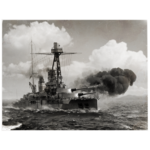
Courbet entered service in 1913 as the lead ship in the first series of French dreadnoughts. The ship was named in honor of Amédée Courbet (1827-1885), a French admiral who won a series of important naval victories during the Sino-French War of 1884-1885 and died of cholera soon after.
During World War I, Courbet participated in battles in the Mediterranean as the flagship of the French fleet. In the 1920–1930s, the ship underwent several upgrades. The outbreak of World War II found this veteran ship in the north of France. In June 1940, Courbet rained the full power of her main battery down on the German motorized regiments approaching Cherbourg. In 1941, while serving in the Free French Naval Forces, the ship participated in the defense of Portsmouth, England, against the Luftwaffe attacks. In 1944, she was disarmed, and her hull was used as a breakwater during the construction of a temporary harbor for landing Allied troops in Normandy.
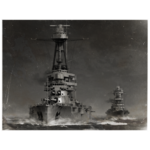
Battleship Bretagne was commissioned in 1916. She was named in honor of Bretagne—a historical province in the north-west of France, where the largest centers of shipbuilding are situated, in Lorient and Brest. The biggest naval base of the French Navy on the Atlantic coast is also located in Brest.
In March–April 1940, Bretagne and heavy cruiser Algérie, as part of the special Force X, fulfilled an unusual mission to carry gold across the Atlantic Ocean. The German submarines were stalking them from below, and the Kriegsmarine raiders—battleships and cruisers—often went out to hunt. That is why using warships as carriers of the precious metal was more than justified. Bretagne and Algérie delivered 147 tons of gold from Toulon to Halifax that was then used to pay for the French government's military contracts placed in the U.S.A. On the way back, the battleship and cruiser escorted transports with 82 warplanes on board that were purchased in the U.S.A.
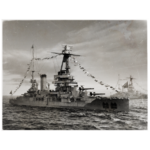
Just like her sister ship Bretagne, battleship Provence entered service in 1916 to become the flagship of the French Navy for several years. The ship was named after Provence, a historical province located in the south of France and the birthplace of the popular national game pétanque. It is in Provence that the country's largest port—Marseille—and the key naval base—Toulon—are located.
In June 1935, Provence served as the flagship of the Atlantic Squadron during the large-scale maneuvers of the combined French fleet near Bretagne's coast. The maneuvers were followed by a grand parade involving around 60 warships of the French Republic. At the beginning of World War II, from January till April 1940, Provence served within Force "Y" created for countering German raiders and protecting convoys in the Central Atlantic.
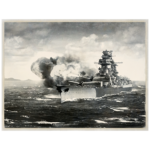
It was in France where one of the most successful and well-balanced battleships of a new generation was built. Richelieu officially entered service in July 1940 after France had capitulated. When the ship was based in Dakar, in July and September 1940, she participated in battles against English forces that were attempting to gain control over the French ships or neutralize them out of fear that they would be captured by Germany.
In 1942, after the French colonies in Africa had defected to the Allies, Richelieu sailed to the U.S.A. for a major refit. Once back in service, the ship was sent to assist the British Home Fleet in operations near the shores of Norway. From spring 1944 until the end of the war, Richelieu served with the combined forces of the Allies, actively operating in the Indian Ocean, raining fire on nearby islands seized by Japanese garrisons.
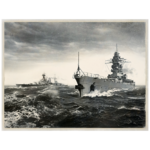
Battleship Dunkerque was commissioned in 1937, becoming the forerunner of a new generation of battleships with powerful guns, good armor and, most importantly, high speed. The maximum speed of the new French battleship exceeded 30 knots which made her an extremely dangerous hunter for cruisers.
When World War II broke out, Dunkerque was unusually in demand since at that time the Allies didn't have other modern high-speed battleships capable of countering German raiders. In Autumn 1939, Dunkerque and her sister ship Strasbourg operated in the Atlantic against the German "pocket" battleships Deutschland and Admiral Graf Spee. That same year, in November, amid a violent storm, Dunkerque and the British battleship Hood set out on a hunt for German Scharnhorst-class battleships. In December, Dunkerque transported 100 tons of gold across the Atlantic to be used as payment under military orders. On the way back, she escorted a convoy with Canadian soldiers.
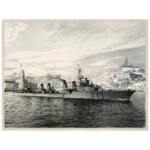
Large destroyer Aigle, which was built at the dockyard in Dunkirk, joined the Naval Forces in 1932. The large destroyer (contre-torpilleur) type of warship, which combined the characteristics of destroyers and cruisers, was used only by France. Other countries relied on flotilla leaders instead. But unlike leaders, the French ships were designed to drive off opposing destroyers rather than lead destroyer flotillas.
During World War II, Aigle was engaged in operations to transport gold bars several times. In November 1939, she escorted Force "Z" ships (battleship Lorraine and two cruisers of the La Galissonnière class) until they reached the Atlantic. In March–April 1940, Aigle provided cover and, later, escorted the ships of Force "X" back. Besides that, Aigle was regularly deployed to escort convoys with troops, heading from the North African ports to Marseille. The last combat operation in which the large destroyer participated was a raid on Genoa, where she had to fend off the attacks of Italian torpedo boats.
"Ships" Collection — Reward
Completing this sub-collection provides the following rewards:
| Icon | Type | Effect |
|---|---|---|
 |
Revolutionary |
|
"Badges and Coats of Arms" Collection
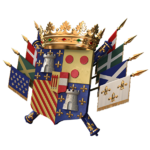
Henri de La Tour d'Auvergne, Vicomte de Turenne (1611–1675) is one of the most prominent French generals. He joined the army as a private during the Thirty Years' War but displayed such daring and skill that he rose meteorically in rank, becoming a Marshal of France at 33. Turenne's innovative approach based on fearless maneuvering on the battlefield and concentrating troops along the main sector of the front helped him secure several brilliant victories during the wars with Spain and Holland. The glorious Marshall's life was taken by an enemy cannonball in his next battle.
The French Navy paid their respects to Turenne by assigning his name to two large battle units—a 100-gun ship-of-the-line launched in 1854 and an ironclad that entered service in 1882. Early in the 20th century, France was considering a project to build an "all-big-gun" battleship as a next step in the evolution of the Danton-class pre-dreadnought battleships, also to be named after one of the most prominent figures in French history.
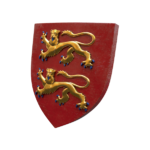
The lead ship in a series of French battleships which superseded the Bretagne-class ships was named after Normandy, a historical province in the north of France housing two of the country's largest sea ports, Rouen and Le Havre. As a result of a centuries-long rivalry between France and Great Britain over possession of this province, Normandy's Coat of Arms is but a variation of the Royal Coat of Arms of the United Kingdom.
The first warship to be named Normandie was a Gloire-class ironclad that entered service in 1862. In 1913-1914, five Normandie-class super-dreadnought battleships were laid down but their construction was ceased due to the outbreak of World War I. Only Béarn, the last ship in the series, was completed as an aircraft carrier.
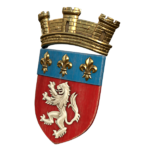
The last series of battleships to be commissioned under a massive shipbuilding program of 1912 comprised four Lyon-class ships. The lead ship was named after Lyon, one of the largest cities and industrial centers in France. All of the battleships were ordered early in 1915 but none of them was even laid down.
The new battleships were supposed to have been more powerful than their predecessors, the Normandie-class warships, which were to carry twelve 340 mm guns placed in three turrets. However, the development of new guns of a larger caliber could entail unacceptable construction delays. To increase the fire power of Lyon-class ships, the designers came up with a simple solution: to increase the number of main guns by adding an extra turret, potentially giving those ships a main battery of 16 guns, the most numerous main battery in the history of dreadnought ships!
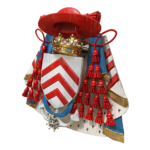
Armand Jean du Plessis, the famous Cardinal Richelieu, was one of the most influential statesmen in France and essentially the founder of the French Navy. Before Richelieu, the kingdom couldn't boast any organized navy. He helped create a fleet that would be recognized as a significant naval force in the international arena. The Cardinal himself was involved in designing the exterior decor and armament of one of the most powerful ships of that time—the 70-gun Couronne ("Crown").
The first warship to be named after Richelieu was an ironclad that joined the fleet in 1876. The next large combat unit of the Marine Nationale to carry the Cardinal's name was a battleship (displacement: 35,000 tons) that was laid down at the Brest Arsenal in 1935. That battleship turned out to be one of the best ships of her type in Europe..
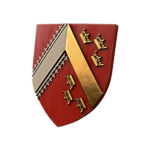
The geographical location of the Alsace province on the border between France and Germany predetermined their rivalry for this territory that lasted from the 19th century right until the end of World War II. Historically, the province comprised two regions which later transformed into departments—Haut-Rhin and Bas-Rhin—so the first Coat of Arms of Alsace, approved in 1948, comprised elements from the Coats of Arms of both departments.
In 1939, France found out that Germany was pursuing a program for the construction of H-class battleships. In response, a decision was made to lay down two battleships capable of withstanding the new threat. One of the draft projects, the most powerful one, provided for twelve 380 mm main guns placed in three turrets, a speed of 32 knots and a 350-mm-thick main armor belt. A construction order was placed in April 1940. One month later, names were suggested for the future steel monsters. The first on the list was Alsace, apparently in the teeth of the geopolitical rival. But the defeat of the French army, and the country's capitulation in June 1940, crippled plans to build the most powerful battleships the French Republic ever had.
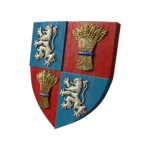
In 1938, driven by further aggravation of the international situation, the French government decided to build a second pair of Richelieu-class battleships. However, significant changes were made to the project designs at the development stage with the last ship carrying the name of a historical province in the south-west of France—Gascogne—designed almost from scratch.
Gascogne's main difference from Richelieu was a more conventional placement of main battery turrets—at the fore and aft ends of the ship. Another important change was the shift of the propulsion unit closer to the ship's fore end and reinforcement of her AA defenses by increasing the number of 100 mm and 37 mm guns. The keel-laying that had been postponed several times was ultimately to take place in the summer of 1940. But after France withdrew from the war in June of the same year, preparations for the construction of the battleship were ceased. The preceding warship Gascogne, one in a series of Normandie-class battleships, can hardly boast a more fortunate destiny. Laid down in 1913 and still under construction, she was decommissioned for scrap.
"Badges and Coats of Arms" Collection — Reward
Completing this sub-collection provides the following rewards:
| Icon | Type | Effect |
|---|---|---|
 |
Valentine's 2017 |
|
"Armaments" Collection
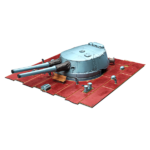
In 1910–1911, specially for the first French dreadnoughts of the Courbet class, a new 305 mm twin turret was developed. The main advantage of the new construction, which distinguished it from previous ones, was inclined armored plates which turned out to be more durable. However, the guns in the turrets were almost the same as those mounted on the last French pre-dreadnought battleships of the Danton class.
The turrets had up to 290 mm of armor and the loading gear was designed to fire up to two 432 kg AP shells per minute. The main disadvantage of Courbet's turrets was a small gun elevation angle (12 degrees only), which significantly decreased the ship's firing range. That shortcoming was fixed only during a major ship refit of 1922–1924 when the angle was increased to 23 degrees.
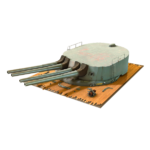
In 1912, a decision was finally reached to proceed with building the third series of battleships for the French Navy. However, plans to make new ships of the Normandie class more powerful than their predecessors were hindered by production constraints, as at that time French shipyards were not big enough to allow for any significant increase in the size of warships. Moreover, the French didn't have guns that were more powerful than the 340 mm guns, which were to be mounted on the Bretagne-class battleships that were at their final stages of construction, and the design of a new gun weapon system would be too expensive timewise. Ultimately, engineers came up with an innovative solution: to mount the main guns intended for the Normandie-class battleships in quad turrets.
The new turret, which would have become the first quad turret ever mounted on a ship, was designed to have a rate of fire of up to two shots per minute. The front armor plates protecting the guns were to have been 340 mm thick. In total, plans were made to build 31 units: each of the five Normandie-class battleships laid down in 1913-1914 was supposed to carry three such turrets, while the Lyon-class warships ordered in 1915 were designed to carry as many as four.
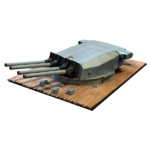
The 380 mm guns of the Richelieu-class battleships were the most powerful guns ever carried by French warships. The decision to place main guns in quad turrets was necessitated by the intention to provide the new battleships with the most powerful armament allowed by limited displacement without decreasing their speed and armor protection.
The design of the 380 mm quad turrets was in many ways based on the construction of 330 mm turrets used on the previous—Dunkerque—class of battleships. This allowed to promptly do away with the design phase and commence construction. Eventually, such turrets were mounted aboard two battleships only, Richelieu and Jean Bart, although plans were made for similar units to be carried by Clemenceau (laid down in 1939) and Gascogne (suggested keel-laying year: 1940). Quad turrets housing 380 mm guns were also envisaged by one of the draft projects for the Alsace-class battleships developed in the spring of 1940.
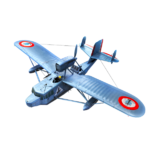
During World War II, Loire 130, a monoplane designed in 1933–1934, was the most commonly used seaplane in the French Navy. It was a flying boat with folding wings and an engine with a pusher propeller mounted above the wing. The maximum speed of Loire 130 was 226 km/h. Its armament included two 7.5 mm machine guns and up to 150 kg of bombs.
Production of this aircraft commenced in 1936, and, by the beginning of World War II, the French Navy had more than fifty flying boats of this type that replaced almost all other models of seaplanes. The reliable and easy-to-maintain Loire 130 was used as a scout, transport, training, and search and rescue aircraft. It was carried by nearly every French cruiser and catapult-equipped battleship like Dunkerque, Strasbourg, Lorraine and Richelieu. Since approximately 1943, when aircraft-handling equipment was dismantled from the majority of warships, seaplanes were assigned to coastal bases.
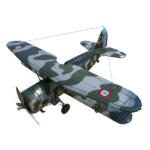
The shipborne scout-bomber SBC Helldiver was manufactured by the U.S. firm Curtiss from 1937. In 1939, the French Government placed an order in the U.S.A. for several dozen of these biplanes for the French Navy. Their production, however, was delayed, and to fill the order a decision was made to provide France with 50 Helldiver bombers from operational U.S. Navy divisions. To accommodate French standards, the planes were renamed as Curtiss CW-77, and were urgently reequipped with French machine guns and camouflaged accordingly.
However, as America had declared neutrality, it couldn't deliver bombers directly to France. A plan was devised to move the biplanes to Halifax, Canada, where they were to be fetched by the French aircraft carrier Bearn. At the last moment, the planes were prohibited to cross the Canadian border by air. They had to be dragged across the border using tractors and trucks available in the vicinity. At the beginning of June 1940, all biplanes were finally loaded on the carrier. The news about the capitulation of France reached Bearn near the island of Martinique. All Helldivers were taken ashore, where they decayed after a few years without proper maintenance.
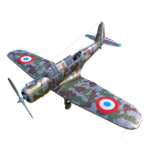
Produced from 1936, the Vought SB2U Vindicator was one of the first American carrier-based monoplane bombers. On the threshold of a war with Germany, in 1939, France placed an order in the U.S. requesting 40 such aircraft to be built for the French Naval Aviation. The bombers were designated "Vought V–156–F" and carried predominantly French-made equipment and armament.
A certain number of French Vindicators were assigned to the aircraft carrier Béarn. Shortly after, this veteran low-speed ship was turned into a mere aircraft carrying vessel, and all Vought V–156–F's were relocated to onshore bases. In May–June 1940, the bombers were actively involved in land front operations against Germany and Italy, and nearly all of them were lost.
"Armaments" Collection — Reward
Completing this sub-collection provides the following rewards:
| Icon | Type | Effect |
|---|---|---|
 |
Lá Fhéile Pádraig |
|
Overall Reward
Completing the entire collection provides the following rewards:
| Icon | Name | Notes |
|---|---|---|
 |
Vive la France Flag |
| Nation | Commander Icon and Name |
Unique Traits | |
|---|---|---|---|
| |
 Jean-Jacques Honoré |
|
Adrenaline Rush reduces the reload time of all types of armament by -0.25% for each 1% of HP lost. (normally -0.2%). |
| |
Expert Marksman improves turret rotation speed by +3.0 deg/s for guns with a caliber of up to 139 mm and +1.0 deg/s for guns with a caliber above 139 mm (normally +2.5 and +0.7, respectively). | ||
